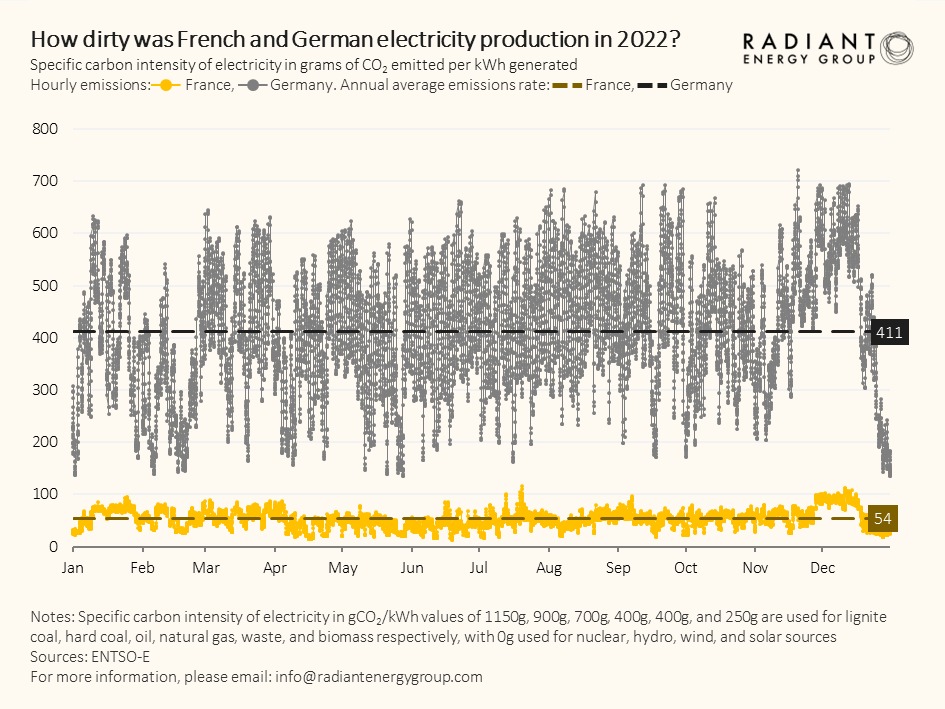In March, Kuosheng Unit 2 became the latest nuclear unit to be retired following the expiry of its 40-year operating licence in accordance with Taiwan’s nuclear phase-out policy. This is the fourth unit to be shut down in Taiwan leaving just two more operating units at Maanshan. When their licences expire in 2024 and 2025, the island’s phase out will be complete, taking its once 20% nuclear share down to zero. And as has been the case with most other nuclear plant closures around the world, its output will be replaced with fossil fuels, adding carbon emissions at a time when we are all trying to reduce them. Taipower has reassured its customers there are numerous new gas-fired power generation projects and even new coal-powered units being brought online this year to make up for the energy lost as a result of its unnecessary nuclear phase out.
Of course, Taiwan is not the first to go down this path. Over the last few years, there have been a number of plants that were closed before their time. In the US, it was primarily due to competition from low-cost gas in deregulated markets. In Europe and Asia, it was simply a result of government anti nuclear policies. Today as we pass the 12th anniversary of the Great Tohoku earthquake and tsunami in Japan, that also triggered the Fukushima nuclear plant accident, things are changing rapidly.

Why? There are two urgent drivers to the revisiting of nuclear power. First and foremost, is the energy crisis in place in Europe due to the war in Ukraine. When energy security is at risk, people respond, and respond quickly. And then there is climate change. With more and more countries setting net zero goals, it has become crystal clear that nuclear must be part of the mix. We have never been more optimistic about the future of nuclear power playing an essential role in a decarbonizing world.
As we have said many times before, deciding not to continue to use nuclear power is the right of every sovereign nation. However, if you believe you have better options, build them, then shut down the old plants. What we have seen is the opposite. Closing nuclear plants in Germany, emissions go up, close Indian Point in New York, emissions go up, close San Onofre in California, emissions go up. Belgium plans to close its nuclear fleet and replace it with gas, emissions will go up. And so on and so on and so on.
It took an energy crisis in Europe for the penny to drop. Closing perfectly good plants that emit zero carbon without having something better to replace them is folly.
Progress has been made. After seeing about 10% of its operating units close, the US started saving units through state legislated support, and now is ensuring nuclear remains an essential part of its carbon reduction strategy with provisions in the recent federal Inflation Reduction Act (IRA). Even when it was generally thought to be too late to save Diablo Canyon in California, common sense prevailed. Belgium has agreed to run its two newest plants another decade and is considering minor extensions for its older units. Korea has recovered from its period of anti nuclear policies and is once again moving full steam ahead. Japan, a decade after the Fukushima accident is recommitting to nuclear power. Even Germany is contemplating extending its final units’ lifetimes, even if only by a very little bit.

We now have enough experience with the early movers who have hoped to decarbonize with renewables alone. Germany has spent two decades and over $500 Billion dollars and made little progress on its emissions reduction goals. Its huge investment in renewables has not been sufficient to overcome the impact of shutting down most of its nuclear fleet. The chart above shows that in 2022, France, with its mostly nuclear fleet emitted about 8 times less carbon than Germany. The evidence is in. Trying to decarbonize with renewables alone is simply not feasible.
But the worst offences remain shutting down perfectly good operating plants before their time. There are 437 nuclear units in operation around the world producing about 10% of the world’s electricity. Yet they also represent the second largest source of global low carbon generation after hydro. Add to that, as stated in the IEA/NEA Projected Cost of Electricity 2020, life extending nuclear plants is the single lowest cost option of any type of electricity generation. No surprise. If something is capital intensive, as nuclear power is, then it makes sense to maximize use of the asset once you have the capital behind you.
So, for all those countries thinking about closing well operating zero emissions nuclear plants before their time, remember what the Pet Shop Boys have said many years ago – It’s a Sin!
Press Play to enjoy!!
[player id=9811]